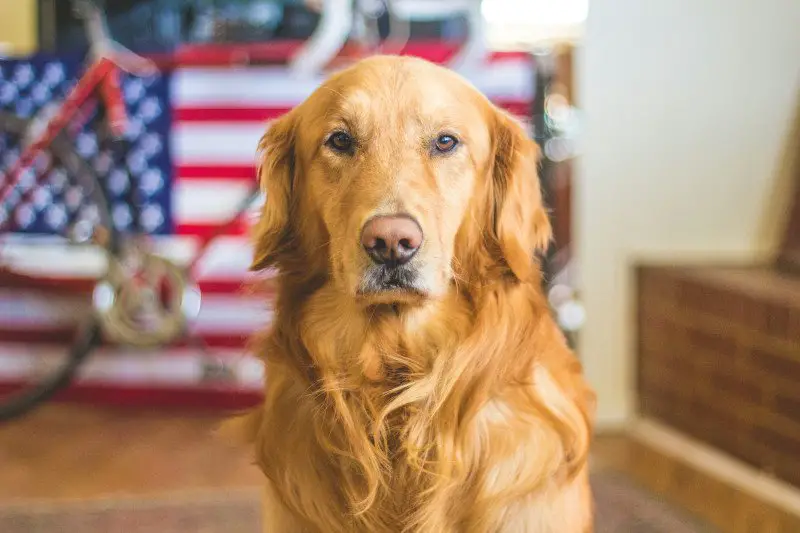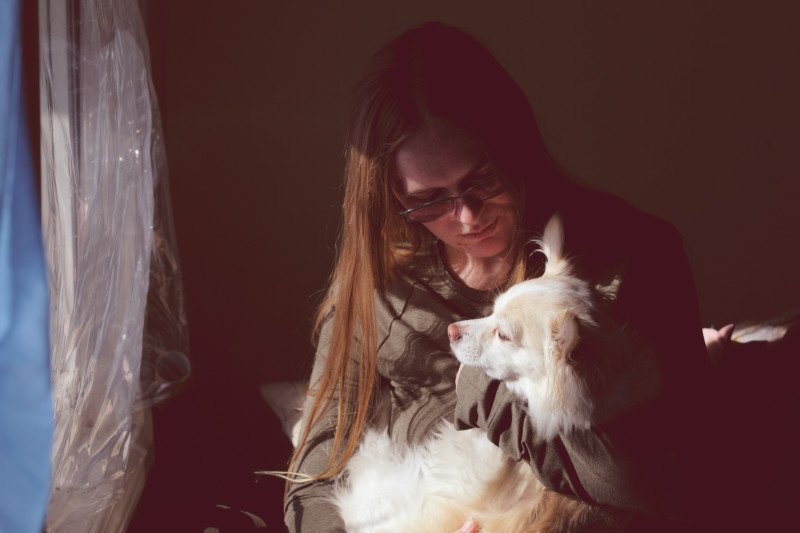Understanding the behavior of rescue dogs is crucial for anyone considering dog adoption. When a dog is brought into a new home, it undergoes a significant transition period that can be challenging for both the pet and the owner. This adjustment phase is often encapsulated by the 3-3-3 rule, a guideline that helps new pet parents understand what to expect during the first three days, three weeks, and three months after bringing a rescue dog home.
The 3-3-3 rule serves as a roadmap to navigate the initial stages of a rescue dog’s integration into a new environment. During the first three days, the dog is likely to feel overwhelmed and may exhibit signs of fear and anxiety. By the end of the first three weeks, the dog begins to settle in, showing more curiosity and starting to test boundaries. After three months, the dog is usually well-adjusted, forming a strong bond with its new family and feeling secure in its new home.
The purpose of this blog post is to educate potential adopters about the 3-3-3 rule, providing them with the knowledge and tools needed to make the transition smoother for their new furry friend. By understanding this rule, adopters can better prepare for the challenges and rewards of bringing a rescue dog into their lives. For more detailed guidance on dog adoption, you can visit our comprehensive guide on dog adoption. Stay tuned as we delve deeper into each phase of the 3-3-3 rule, offering practical tips and insights to help you and your rescue dog thrive together.

Photo by Ananthu Baburaj on Unsplash
Table of Contents
The First 3 Days: Initial Adjustment Period
Common Behaviors and Emotions
During the initial three days after a rescue dog adoption, it’s common for the dog to experience a range of emotions and exhibit various behaviors. Understanding these can help you better support your new pet. Fear and Anxiety: Rescue dogs often come from environments where they may have experienced neglect, abuse, or abandonment. As a result, they may display signs of fear and anxiety. This can manifest as trembling, hiding, or excessive barking.
It’s essential to recognize that these behaviors are a natural response to their new surroundings. Overwhelm and Confusion: The sudden change in environment can be overwhelming for a rescue dog. They may be confused by new sights, sounds, and smells. This confusion can lead to disorientation and a reluctance to explore their new home. Possible Withdrawal or Aggression: Some dogs may withdraw and become unresponsive, while others might show signs of aggression as a defense mechanism. Understanding that these reactions are temporary and part of the adjustment process is crucial.
Tips for Easing the Transition
To help your rescue dog feel more comfortable during the first three days, consider implementing the following strategies:
Creating a Safe Space: Designate a quiet, comfortable area in your home where your dog can retreat and feel secure. This space should include a cozy bed, some toys, and access to water. Avoid overwhelming your dog with too much attention or activity initially.
Establishing a Routine: Dogs thrive on routine, and establishing a consistent schedule for feeding, walking, and bathroom breaks can provide a sense of stability. This routine will help your dog understand what to expect and reduce anxiety.
Providing Basic Needs and Comfort: Ensure that your dog has access to food, water, and a comfortable place to rest. Spend time sitting quietly with your dog, offering gentle reassurance through petting and soft-spoken words. Avoid forcing interaction; let your dog approach you when they feel ready.
Importance of Patience and Observation
Patience and keen observation are vital during the initial adjustment period. Here’s why: Recognizing Stress Signals: Pay close attention to your dog’s body language and behavior. Signs of stress can include panting, pacing, drooling, or excessive licking. By recognizing these signals, you can take steps to alleviate your dog’s discomfort. Allowing the Dog to Acclimate: Give your dog the time and space they need to acclimate to their new environment. Avoid introducing too many new experiences or people at once. Gradual exposure will help your dog build confidence and feel more secure. The first three days are just the beginning of your journey together. By understanding and addressing your rescue dog’s initial behaviors and emotions, you can lay the foundation for a successful transition. This period is crucial for building trust and setting the stage for the weeks and months to come. For more dog adoption tips and insights, continue reading as we explore the next phases of the 3-3-3 rule.

Photo by Caleb Fisher on Unsplash
The First 3 Weeks: Settling In
Behavioral Changes and Signs of Adaptation
As you move into the first three weeks of your rescue dog adoption journey, you’ll likely notice significant changes in your dog’s behavior. This period is crucial for observing how your dog begins to adapt to their new environment. Increased Curiosity: During the initial days, your dog may have been hesitant to explore. However, as they start to feel more comfortable, you’ll notice an increase in curiosity. They may begin to sniff around the house, investigate new areas, and show interest in their surroundings. This curiosity is a positive sign that your dog is starting to feel more at home. Testing Boundaries: As your dog becomes more comfortable, they may start to test boundaries. This can include behaviors like jumping on furniture, chewing on items, or pushing limits during walks. It’s essential to address these behaviors early on to establish what is acceptable and what is not. Consistent training and clear communication are key during this phase. Beginning to Relax: One of the most rewarding signs of adaptation is seeing your dog begin to relax. They may start to sleep more soundly, show playful behavior, and seek out your company. This relaxation indicates that your dog is starting to trust their new environment and feel secure.
Building Trust and Establishing Rules
Building trust and establishing rules are fundamental aspects of helping your dog settle in during the first three weeks. Consistent Training: Consistency is crucial when it comes to training. Use the same commands and reward good behavior with treats or praise. Consistent training helps your dog understand what is expected of them and builds a sense of security. Whether you adopt a dog from a shelter or through other dog rescue organizations, training should be a priority. Positive Reinforcement: Positive reinforcement is an effective way to encourage desired behaviors. Reward your dog with treats, praise, or playtime when they follow commands or exhibit good behavior. This approach not only helps in training but also strengthens the bond between you and your dog. Setting Boundaries: Establishing boundaries is essential for creating a harmonious living environment. Make it clear where your dog is allowed to go and what behaviors are acceptable. Use gentle but firm corrections to guide your dog. Setting boundaries early on will help prevent behavioral issues in the future.
Socialization and Interaction
Socialization and interaction are vital components of your dog’s adaptation process during the first three weeks. Introducing to Family Members: Gradually introduce your dog to all family members, including other pets. Ensure that these introductions are calm and controlled. Allow your dog to approach at their own pace and provide positive reinforcement for calm behavior. This gradual introduction helps build positive associations with new people and animals. Gradual Exposure to New Environments: Slowly expose your dog to new environments outside the home. Start with short walks around the neighborhood and gradually increase the duration and complexity of these outings. This exposure helps your dog become more confident and adaptable. Participating in dog adoption events can also provide valuable socialization opportunities. The first three weeks are a critical period for your rescue dog to settle in and start feeling at home. By understanding and addressing behavioral changes, building trust, establishing rules, and promoting socialization, you can create a supportive environment for your new furry friend. This phase sets the stage for a deeper bond and a more stable relationship as you move forward. For more dog adoption tips and insights, continue reading as we explore the next phase of the 3-3-3 rule.
The First 3 Months: Developing a Bond
Deepening the Relationship

Photo by Alexander Grey on Unsplash
As you move into the first three months of your rescue dog adoption journey, the focus shifts to deepening the relationship between you and your dog. This period is crucial for building a strong, lasting bond. Recognizing Individual Personality: By now, your dog’s unique personality will start to shine through. Whether they are playful, reserved, or affectionate, recognizing and appreciating these traits will help you connect on a deeper level. Understanding your dog’s personality allows you to tailor your interactions and activities to suit their preferences, making them feel more understood and loved. Strengthening Trust: Trust is the cornerstone of any strong relationship. Continue to build trust by being consistent, patient, and loving. Avoid sudden changes in routine or environment that could unsettle your dog. Trust is built over time through positive experiences and reliable care. Whether you adopt a dog from a shelter or through other dog rescue organizations, trust-building is essential. Increased Affection and Loyalty: As trust deepens, you’ll likely notice an increase in your dog’s affection and loyalty. They may seek out more physical contact, follow you around the house, and show excitement when you return home. These signs of affection are indicators that your dog feels secure and bonded to you.
Advanced Training and Activities
With the initial adjustment period behind you, the first three months are an excellent time to focus on advanced training and activities that will enrich your dog’s life. Obedience Training: Advanced obedience training can help reinforce good behavior and improve communication between you and your dog. Consider enrolling in a training class or working with a professional trainer. Obedience training not only teaches your dog important commands but also strengthens your bond through structured interaction. Engaging in Play and Exercise: Regular play and exercise are vital for your dog’s physical and mental well-being. Activities like fetch, tug-of-war, and agility training can provide both exercise and mental stimulation. Tailor these activities to your dog’s energy level and interests. Engaging in play helps to release pent-up energy and fosters a joyful connection. Mental Stimulation: Mental stimulation is just as important as physical exercise. Puzzle toys, scent games, and training exercises can keep your dog’s mind sharp and engaged. Mental challenges help prevent boredom and reduce the likelihood of destructive behaviors. Incorporating these activities into your routine will contribute to your dog’s overall happiness and well-being.
Long-term Integration and Stability
The first three months are also about ensuring long-term integration and stability for your rescue dog. Consistent Routines: Maintaining consistent routines for feeding, walking, and bedtime helps your dog feel secure and understand what to expect. Consistency in daily activities provides a sense of normalcy and reduces anxiety. A stable routine is particularly important for dogs who have experienced the upheaval of rehoming. Ongoing Socialization: Continue to expose your dog to new people, animals, and environments. Ongoing socialization helps your dog become well-adjusted and confident. Attend dog adoption events, visit dog parks, and arrange playdates with other dogs. Positive social experiences contribute to your dog’s emotional health and adaptability. Monitoring Health and Well-being: Regular veterinary check-ups are essential to monitor your dog’s health. Keep an eye on their weight, dental health, and overall condition. Address any health concerns promptly and ensure your dog is up-to-date on vaccinations and preventative care. A healthy dog is a happy dog, and maintaining their well-being is a key aspect of responsible pet ownership. The first three months are a transformative period in your rescue dog adoption journey. By focusing on deepening your relationship, engaging in advanced training and activities, and ensuring long-term integration and stability, you can create a loving and supportive environment for your new furry friend. This phase solidifies the bond between you and sets the stage for a lifetime of companionship and joy. For more dog adoption tips and insights, continue exploring our resources and stories from other adopters.
Reflecting on the 3-3-3 Rule and Its Significance
The 3-3-3 rule serves as a valuable framework for understanding the stages of adjustment that a rescue dog undergoes when transitioning to a new home. This rule breaks down the initial three months into three critical phases: the first three days, the first three weeks, and the first three months. Each phase presents unique challenges and opportunities for both the dog and the adopter. In the first three days, the focus is on helping the dog navigate the initial shock and anxiety of being in a new environment.
This period is marked by behaviors such as fear, confusion, and possible withdrawal or aggression. By creating a safe space, establishing a routine, and providing basic needs, adopters can help their new pet begin to feel more secure. The first three weeks are about settling in. During this time, dogs start to show increased curiosity, test boundaries, and begin to relax. Building trust through consistent training, positive reinforcement, and setting boundaries is crucial. Socialization and interaction with family members and gradual exposure to new environments also play a significant role in helping the dog adapt. The first three months focus on developing a deep bond between the dog and the adopter. Recognizing the dog’s individual personality, strengthening trust, and increasing affection and loyalty are key aspects of this phase. Advanced training, engaging in play and exercise, and providing mental stimulation enrich the dog’s life.
Ensuring long-term integration and stability through consistent routines, ongoing socialization, and monitoring health and well-being sets the stage for a successful and fulfilling relationship. Understanding the 3-3-3 rule is essential for anyone considering dog adoption. It provides a roadmap that helps adopters anticipate and address the needs of their new pet, fostering a smoother transition and a stronger bond. Adopting a rescue dog is a rewarding but challenging journey that requires patience, commitment, and understanding. The 3-3-3 rule offers a structured approach to help adopters navigate the initial stages of bringing a rescue dog into their home. By being patient and committed, adopters can provide the stability and love that rescue dogs need to thrive. It’s important to remember that every dog is unique, and the time it takes for them to adjust may vary. Some dogs may take longer to feel comfortable, while others may adapt more quickly. The key is to remain patient and consistent, offering support and reassurance throughout the process.
Potential adopters should also be prepared for the emotional and logistical aspects of bringing a rescue dog into their home. This includes understanding the dog adoption requirements, completing the dog adoption application, and being aware of any dog adoption fees. Engaging with dog rescue organizations and participating in dog adoption events can provide valuable resources and support. The benefits of adopting a rescue dog are immense. Not only do you provide a loving home for a dog in need, but you also gain a loyal and affectionate companion. The bond that forms between a rescue dog and their adopter is often incredibly strong, built on a foundation of trust and mutual respect. In conclusion, the 3-3-3 rule is a powerful tool for guiding adopters through the initial stages of rescue dog adoption. By understanding and applying this rule, potential adopters can create a positive and supportive environment for their new furry friend. Patience, commitment, and love are the cornerstones of a successful adoption journey, leading to a lifetime of companionship and joy.




